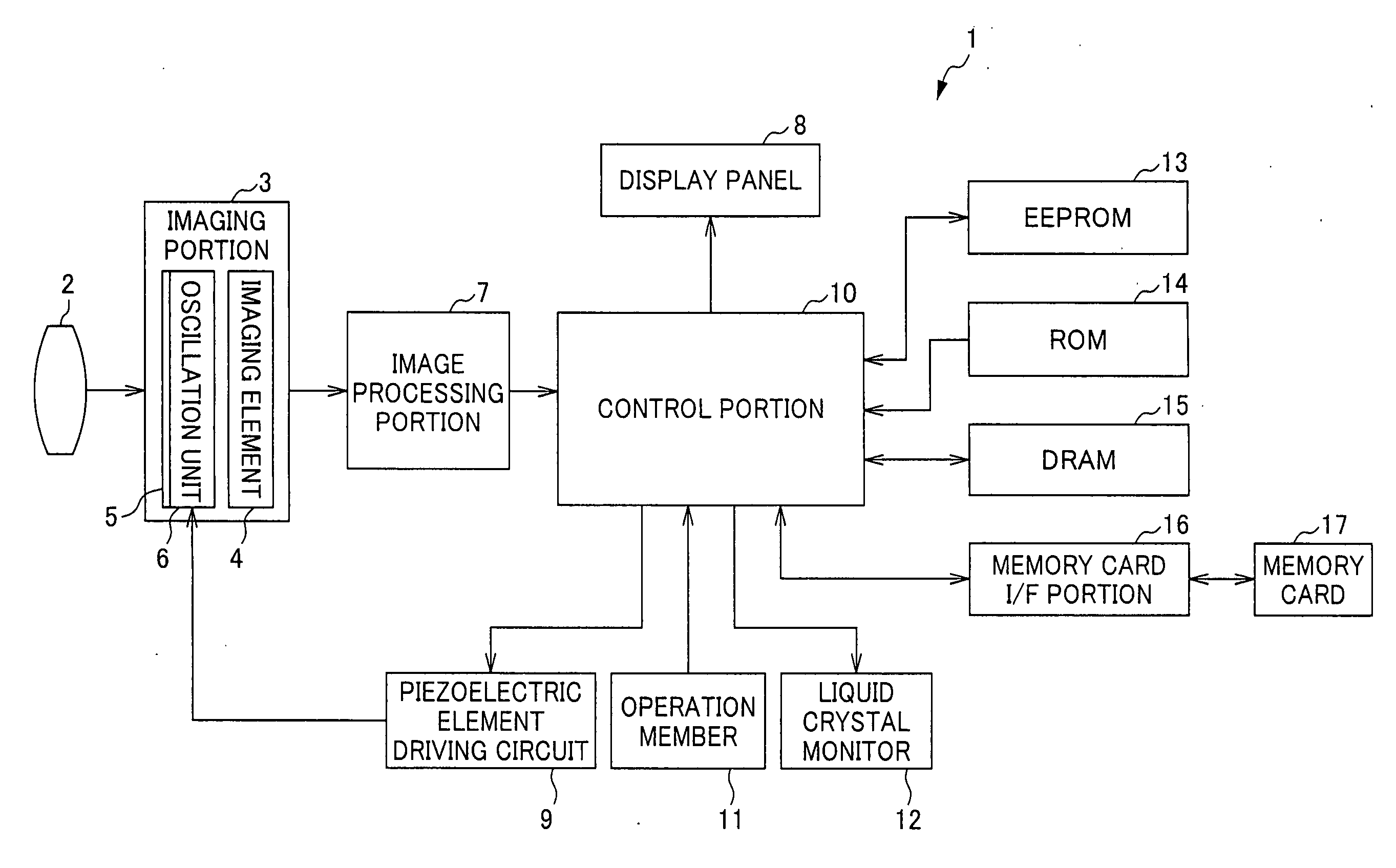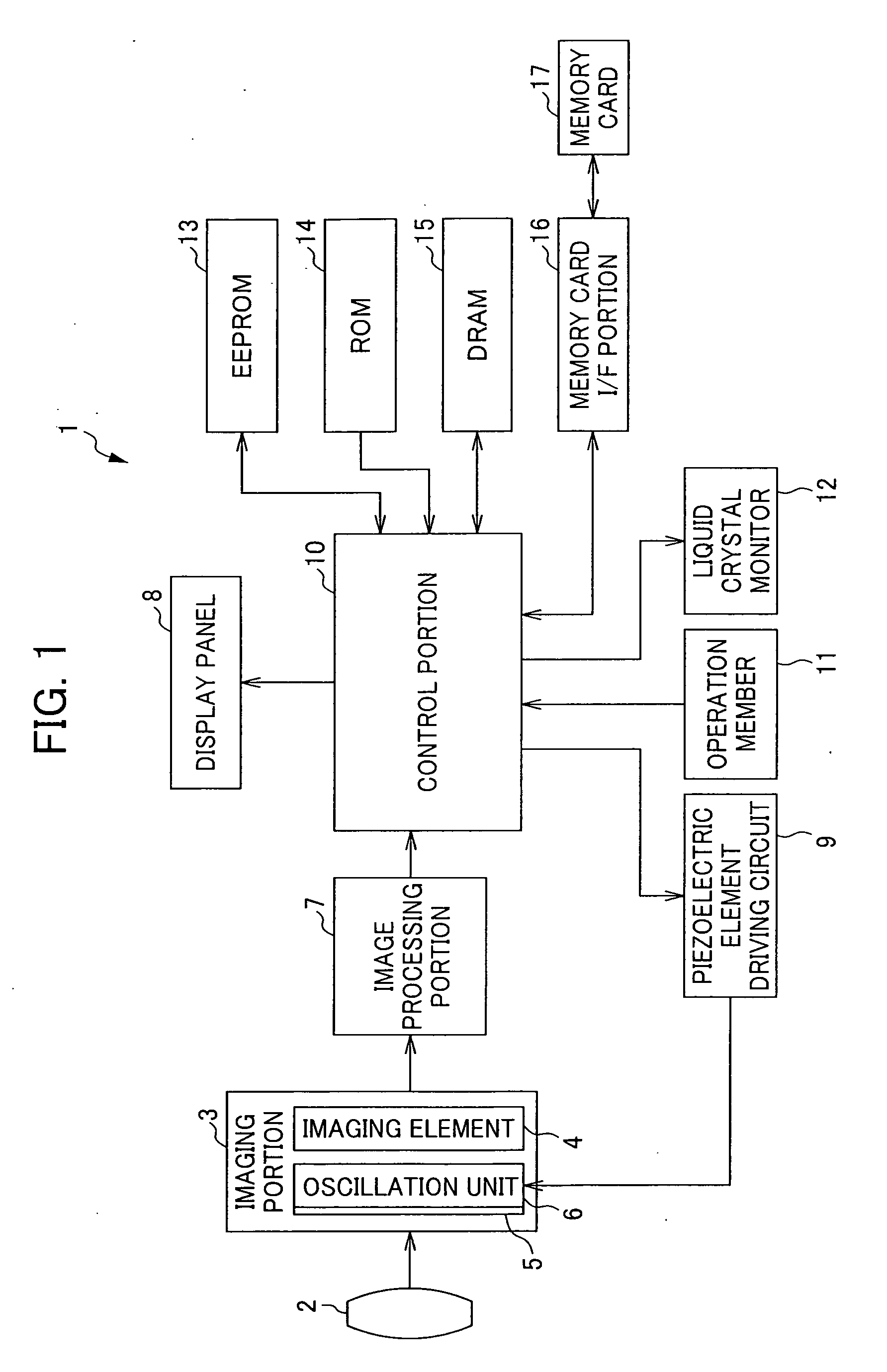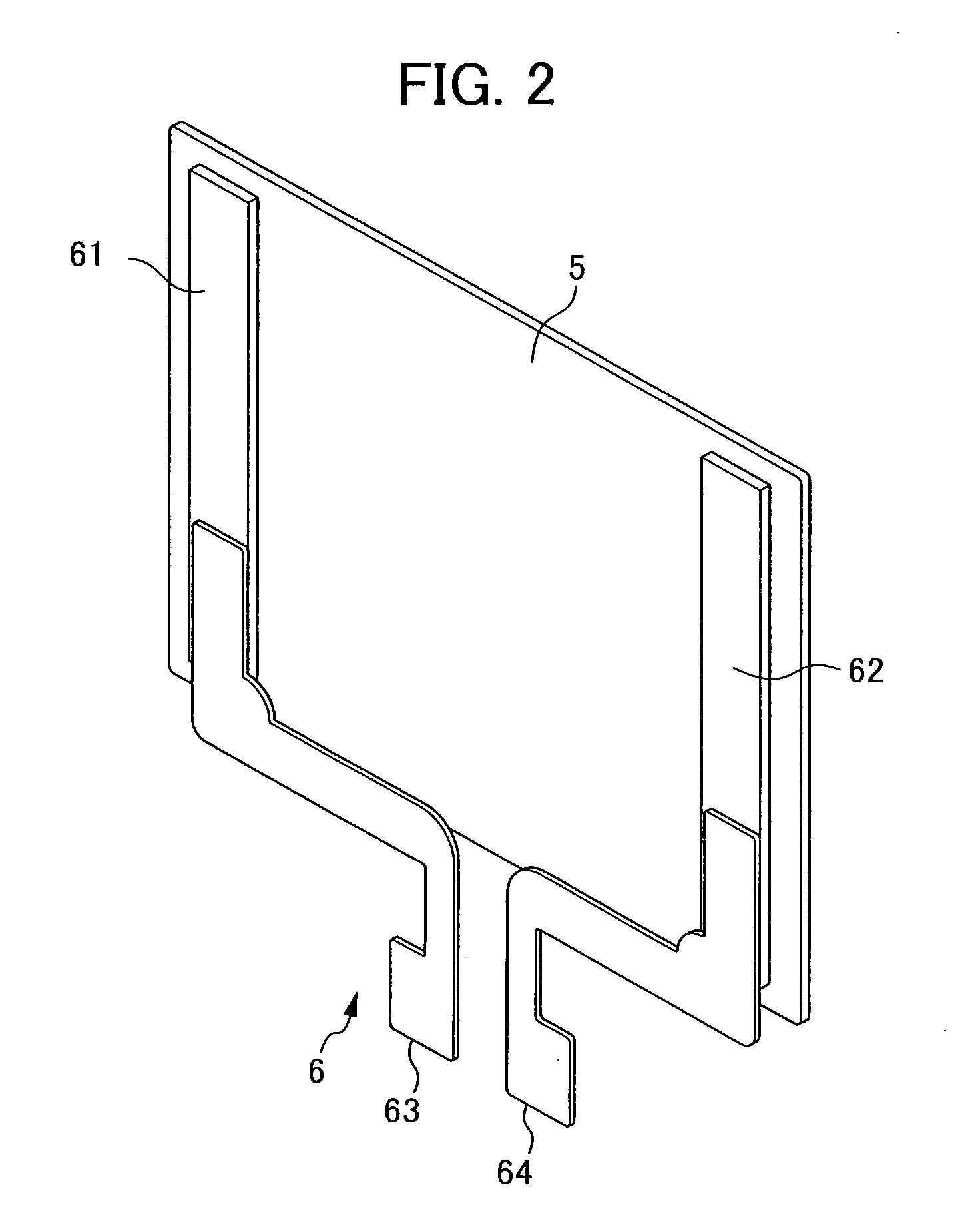Imaging apparatus and foreign object removal program
- Summary
- Abstract
- Description
- Claims
- Application Information
AI Technical Summary
Benefits of technology
Problems solved by technology
Method used
Image
Examples
embodiment 1
[0058]According to the above described Embodiment 1, in addition to specifying the position of the foreign object based on the image data of the white screen, the driving cycle number of the oscillation modes where this foreign object is present at the peak portions of the oscillation forms are increased, therefore these portions where a foreign object is attached to the optical member 5 can be oscillated more than usual. Accordingly, foreign objects attached to the surface of the optical member 5 can be efficiently removed.
[0059]Further, in Embodiment 1, when the image data of the white screen is analyzed and a foreign object is not present, each oscillation mode is executed with the basic driving cycle numbers NA0, NB0, and NC0, therefore, fine dust which is not recognized as a foreign object and the like can also be removed. In the same way, when a foreign object is present, but there is no oscillation mode for which the foreign object is present at the peak portion of the oscill...
embodiment 2
[0061]Next, the procedure for the foreign object removal process in Embodiment 2 is explained with reference to the flowchart shown in FIG. 6. In this Embodiment 2, the driving voltage of the oscillation modes where a foreign object is present at a peak portion of the oscillation form is changed. Further, in FIG. 6, VA0, VB0, and VC0 are the basic driving voltages (maximum value of the AC voltage), and a prescribed voltage value is set as the initial value. Further, VA, VB, and VC are the actual driving voltages. If the driving voltages VA, VB, and VC are not changed, then VA=VA0, VB=VB0, and VC=VC0. This routine of the foreign object removal process is executed by activating the foreign object removal process program stored in the ROM 14.
[0062]First, the control portion 10 resets the driving voltages VA, VB, and VC stored in the EEPROM 13 to the initial values (step S201). Next, it is determined whether image data of a white screen is stored in the EEPROM 13 (step S202). Here, if t...
PUM
 Login to View More
Login to View More Abstract
Description
Claims
Application Information
 Login to View More
Login to View More - Generate Ideas
- Intellectual Property
- Life Sciences
- Materials
- Tech Scout
- Unparalleled Data Quality
- Higher Quality Content
- 60% Fewer Hallucinations
Browse by: Latest US Patents, China's latest patents, Technical Efficacy Thesaurus, Application Domain, Technology Topic, Popular Technical Reports.
© 2025 PatSnap. All rights reserved.Legal|Privacy policy|Modern Slavery Act Transparency Statement|Sitemap|About US| Contact US: help@patsnap.com



